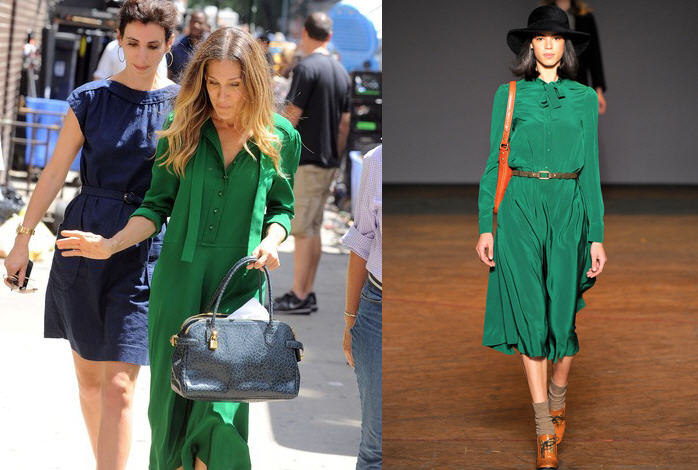
Many of us get our fashion fix today at rather low prices. This indeed allowed us to become fashionable and presentable to our family, friends, acquaintances, and lovers without having to break the bank – thus allowing us to budget our money for different purposes or to enjoy the other pleasures of life such as travel, fine goods, and personal transportation, among other things.
Yet, it seems that most of us are unaware of the origins of the clothes that we use. Even for those of us who are aware that these clothes have been made in unsafe working conditions by laborers who have to work 100 or so hours in a week and carry home minimal pay at the end of it all, we raise our hands in bewilderment when we see the complexity of the matter.
While it is easy for us to say our opinions and openly advocate for more humane and sustainable work practices in the fashion industry, the bitter truth is that those of us who have to work in those factories do not have any choice in the matter at all.
Especially for many of us out there who are facing financial challenges on multiple fronts and unsavory employment prospects, the relative stability of having a job at a factory is usually the only logical choice available in the market: Most other job options in many Third World countries, especially for women and children, open them up to all sorts of abuse by men. This is one of the reasons why many workers feel compelled to accept the exploitation of the fashion industry. On the other side of the coin, a lack of alternative livelihood options, economic development, governmental support, and social welfare systems in those countries ensure that many blue-collar workers are willing to turn a blind eye to the injustices committed by the fashion industry in return for the ability to feed their families and have a chance at social mobility in the future.
At the macro level, governments of the Global South and rising economic tigers have turned a blind eye to these practices in exchange for large amounts of largesse from these fashion companies. After all, the jobs, investment, and taxes paid by these business entities do not just fuel these economies, but they also allow the governments of these economies to claim that they are a safe and conducive country for foreign investment – thus letting them gain more money for themselves and their nations in the process. Furthermore, it is already a proven fact that companies will just remove their factories from countries that have stringent labor practices or even just pursue minor versions of these similar systems and place them in states where there is zero labor control and policy in place. As a result of this, governments aren’t exactly open to changing their respective labor policies unless there are incentives from other socio-political actors or immense pressure from their populations (or external entities) to do so.
Finally, we customers play a huge part in this issue, as ongoing demand for the consumption of these fashion designs ensure that companies will keep cranking them out in huge numbers, even as around 60% of them do not get used at all – and are instead relegated to the trash bin. As a matter of fact, many of these discarded products end up in countries like the Philippines, where they are sold as “overruns” which represent products that are manufactured by the original brand manufacturer and are accordingly, not intended to be sold at retail stores due to one defect or another – when in fact, for the most part, many of these clothes have been intended to be thrown by the manufacturers themselves in the first place!
These factors are among the main reasons why this version of modern slavery still continues at a grand scale and why there is a lot of work to do when it comes to introducing humane and sustainable working conditions for the workers inside the global fashion industry.
On the other hand, developments such as the continuous adoption automation and development of peripheral technologies such as NFT-based digital fashion systems (Digitalax is one example of this) are starting to change the standing realities of the fashion industry. While the former aims to improve productivity and bring the quality of fashion products within consistent parameters by optimizing human intervention and mitigating manufacturing mistakes, the latter tries to supplant the physical element of clothing and allows fashion to be expressed, conceptualized, produced, and exhibited in a completely digital platform. While it is true that all of these developments will directly affect laborers in the fashion industry, these things will also allow fashion workers to actually direct their energies towards more rewarding and more creative work, which in turn uplift the level of the fashion industry overall. On the labor side of things, it is possible that the proliferation of these technological advances worldwide will indirectly force companies to actually introduce better working conditions that will reflect the products that these workers do at the factory by redefining the process of production.
Yes, it is sad that we have to use clothes that are manufactured through dubious and environmentally-damaging methods in our everyday lives. However, by raising awareness of these realities, as well as promoting more sustainable modes of production, it might just be possible that one day, we may see the fashion industry turn into a sector that fully embraces the best practices in labor management and technological innovation. After all, hanging these current practices does not just involve people in the government or stakeholders in the fashion industry; we as consumers also need to play our own part in the matter.
Who knows, maybe we can finally wear products that have been sustainably produced in the near future and maybe those workers will finally get the pay that they deserve.
Effective and positive change in the fashion industry is a continuous process – and we all have a part to play in it.









